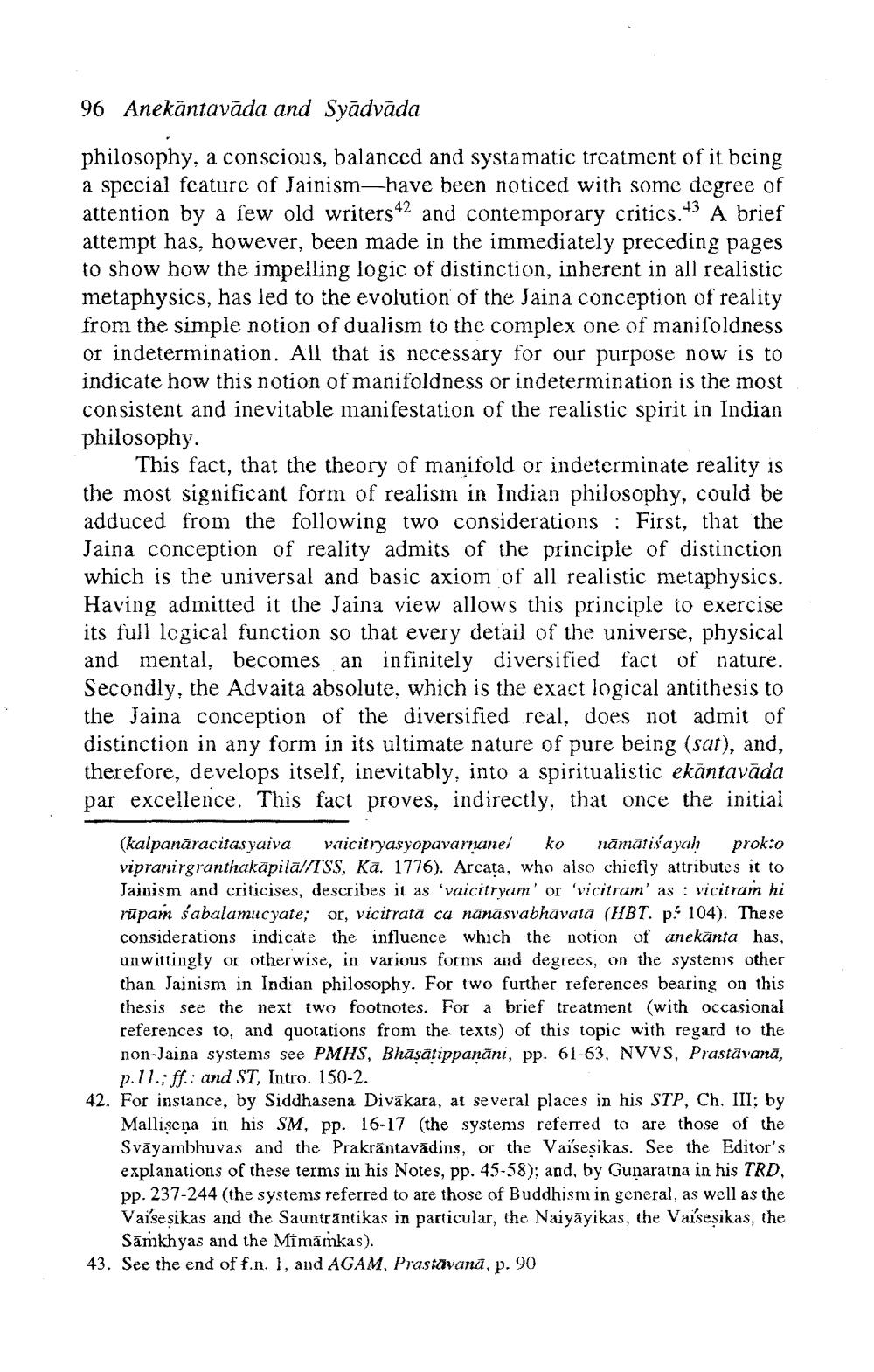________________
96 Anekāntavāda and Syādvāda
philosophy, a conscious, balanced and systamatic treatment of it being a special feature of Jainism—have been noticed with some degree of attention by a few old writers 42 and contemporary critics.13 A brief attempt has, however, been made in the immediately preceding pages to show how the impelling logic of distinction, inherent in all realistic metaphysics, has led to the evolution of the Jaina conception of reality from the simple notion of dualism to the complex one of manifoldness or indetermination. All that is necessary for our purpose now is to indicate how this notion of manifoldness or indetermination is the most consistent and inevitable manifestation of the realistic spirit in Indian philosophy.
This fact, that the theory of manifold or indeterminate reality is the most significant form of realism in Indian philosophy, could be adduced from the following two considerations : First, that the Jaina conception of reality admits of the principle of distinction which is the universal and basic axiom of all realistic metaphysics. Having admitted it the Jaina view allows this principle to exercise its full logical function so that every detail of the universe, physical and mental, becomes an infinitely diversified fact of nature. Secondly, the Advaita absolute, which is the exact logical antithesis to the Jaina conception of the diversified real, does not admit of distinction in any form in its ultimate nature of pure being (sat), and, therefore, develops itself, inevitably, into a spiritualistic ekāntavāda par excellence. This fact proves, indirectly, that once the initial
(kalpanāracitas yaiva vaicitryasyopavarnanel ko nāmätis ayah prokto vipranirgranthakapilā//TSS, Ka. 1776). Arcata, who also chiefly attributes it to Jainism and criticises, describes it as 'vaicitryam' or 'vicitram'as : vicitram hi rūpam sabalamucyate; or, vicitrată ca nānasvabhavata (HBT. p.: 104). These considerations indicate the influence which the notion of anekanta has, unwittingly or otherwise, in various forms and degrees, on the systems other than Jainism in Indian philosophy. For two further references bearing on this thesis see the next two footnotes. For a brief treatment (with occasional references to, and quotations from the texts) of this topic with regard to the non-Jaina systems see PMHS, Bhāṣātippanāni, pp. 61-63, NVVS, Prastavanā,
p.11., ff.: and ST, Intro. 150-2. 42. For instance, by Siddhasena Divākara, at several places in his STP, Ch. III; by
Mallisena in his SM, pp. 16-17 (the systems referred to are those of the Svāyambhuvas and the Prakrāntavādins, or the Vai'seşikas. See the Editor's explanations of these terms in his Notes, pp. 45-58); and, by Gunaratna in his TRD, pp. 237-244 (the systems referred to are those of Buddhism in general, as well as the Vaisesikas and the Sauntrāntikas in particular, the Naiyāyikas, the Vai'seşikas, the
Samkhyas and the Mimāmkas). 43. See the end off.n. 1, and AGAM, Prastāvanā, p. 90




